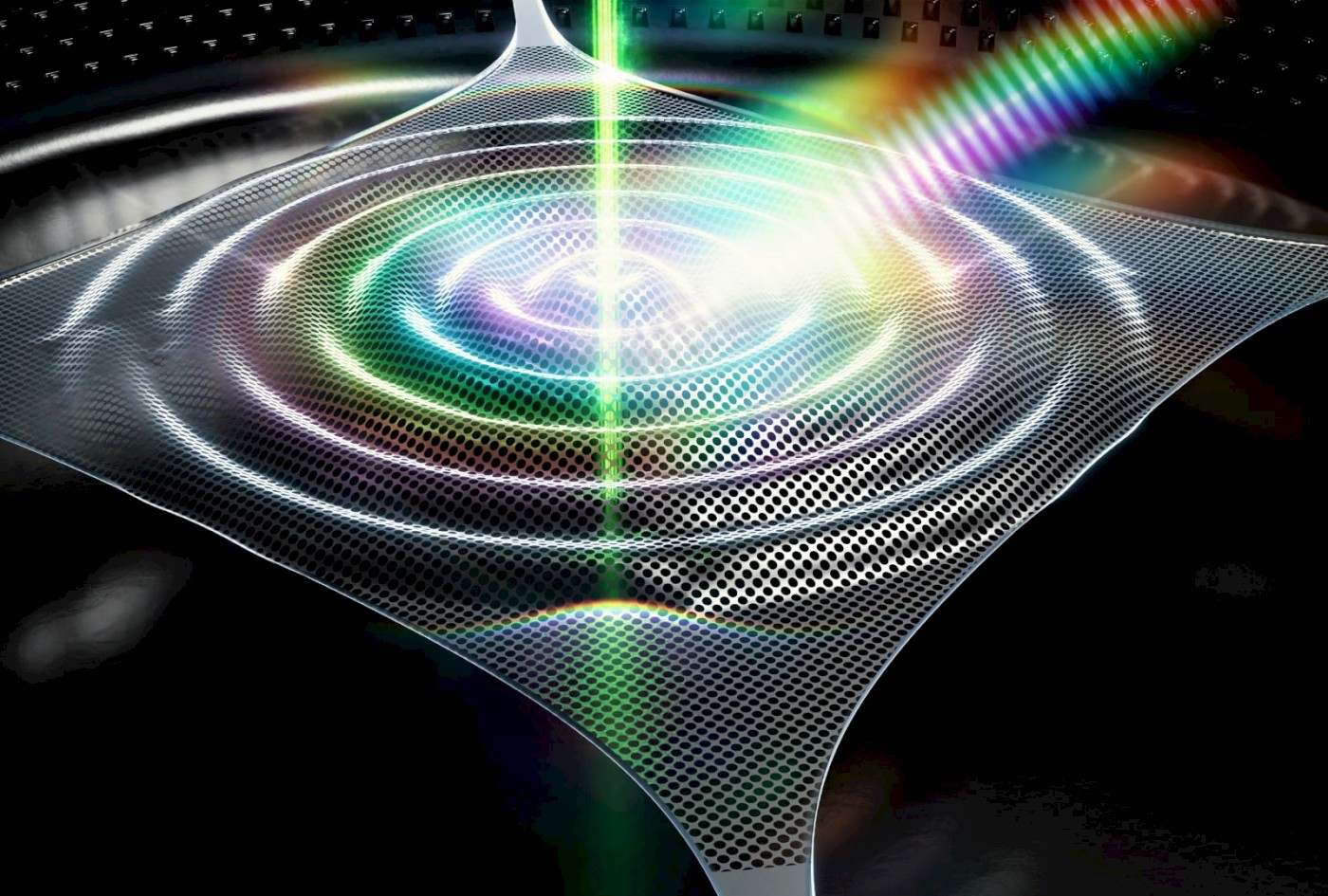
Adarsh Ganesan, Assistant Professor, School of Engineering and Applied Science, collaborated with researchers at TU Delft on building a miniature microchip that is of significant importance in monitoring Earth’s climate, for medical imaging, and for applications in quantum technologies.
Measurement is an integral part of our lives. Whether measuring the length of an object, weighing a kilogram of apples at the local supermarket, or keeping track of our daily water intake in litres, we are accustomed to quantifying the world around us. These measurements are tangible and can be easily perceived by our eyes and measured with the metric system. But what if we were to measure something so minuscule that it exists beyond the scope of a standard ruler or measuring tape? Then the question arises: How do we navigate a world where the minute details evade our grasp?
Adarsh Ganesan, Assistant Professor, School of Engineering and Applied Science, in collaboration with two researchers, Richard Norte and Matthijs de Jong from TU Delft, addressed this issue in his recent research with the help of two Nobel Prize winning concepts - Optical Frequency Comb (Nobel Prize, 2005) and Optical Trapping also known as Optical Tweezers (Nobel Prize, 2018). This work is published in Nature Communications in March 2023.
Professor Ganesan explains the study: "Optical Frequency Comb is similar to a simple metric ruler, but instead of length, it aims to measure the frequency of a laser or light. We need the precise frequency of a laser to understand how a laser could behave and put it to use." In simpler terms, a laptop's specifications tell us about its ability to perform. Similarly, the frequency of a laser could reveal its potential use. "Despite frequency being an essential property of laser, no devices were good enough to precisely measure this characteristic. The measurement of laser frequency was finally made possible by optical frequency comb," he adds.
Professor Ganesan elaborates on the importance of precision with the example of time. In our day-to-day life, we do not need the exact time down to its milliseconds; just 9:10 AM or 15:45 is enough for our understanding. However, we need to know the time more precisely for complex systems like the GPS, where even a tiny fraction of the time is valuable. He explains the direct use of the optical frequency comb, "An optical atomic clock is a device that gives us precise time, and it uses an optical frequency comb to measure it." The use of frequency combs was widespread in the field of optics. However, its uses were yet to be explored in mechanical, material, or molecular science.
Professor Ganesan's work in this domain dates back to his doctoral studies. In 2017, he published a paper to demonstrate frequency combs in a micro mechanical system. He shares, "The device was like miniature diving boards about the size of a single strand of hair. While we can see them with the naked eye, we would not know their exact measurements." On banging these boards through electrical fields to create simple oscillations, he noticed that they have different modes of vibrations. "This was akin to how the strings of a guitar produce different sounds depending on how you play it," he explains. These mechanical systems, unlike optics, are highly sensitive devices. "Combining the aspects of the exceptional sensitivity of mechanical devices with the potential of a frequency comb, one could develop a precise measurement system which could be used in a wide range of fields," he states.
In his first paper, he combined multiple vibrations of a mechanical device; he later realised that it is a complex and lengthy process. He says, "Many times, you will end up with linear devices where the scope of coupling multiple modes of variations is limited." Finally, in 2023, Professor Ganesan found a shortcut to refine the process by using only one mode of vibrations. Along with these peers from TU Delft, he achieved this feat by putting a micromechanical trampoline of very high quality factor of Optical Trapping. He explains, "A high-quality factor trampoline is similar to a swing which continuously oscillates when stimulated. When placed under an optical trap, a spatially varying force gets imparted on these perpetual mechanical vibrations. This force provides the necessary coupling to create a frequency comb," he adds.
Implications of the Research
This refinement of the experiment, by shifting from coupling multiple vibrations to merely exciting one mode of vibration, made frequency combs more accessible, simple, and a low-powered technology. It does not need complex hardware or set-up and can be easily produced. Owing to their minuscule size and flexibility of use, these diving boards and trampolines could be used anywhere and open the door for their application in a wide variety of mechanical systems. This technology could be used to develop devices to monitor minute fluctuations in the Earth's climate, detailed medical imaging, and nanoscopic changes in human health. This research is set to revolutionise how we grasp the microscopic world.
References